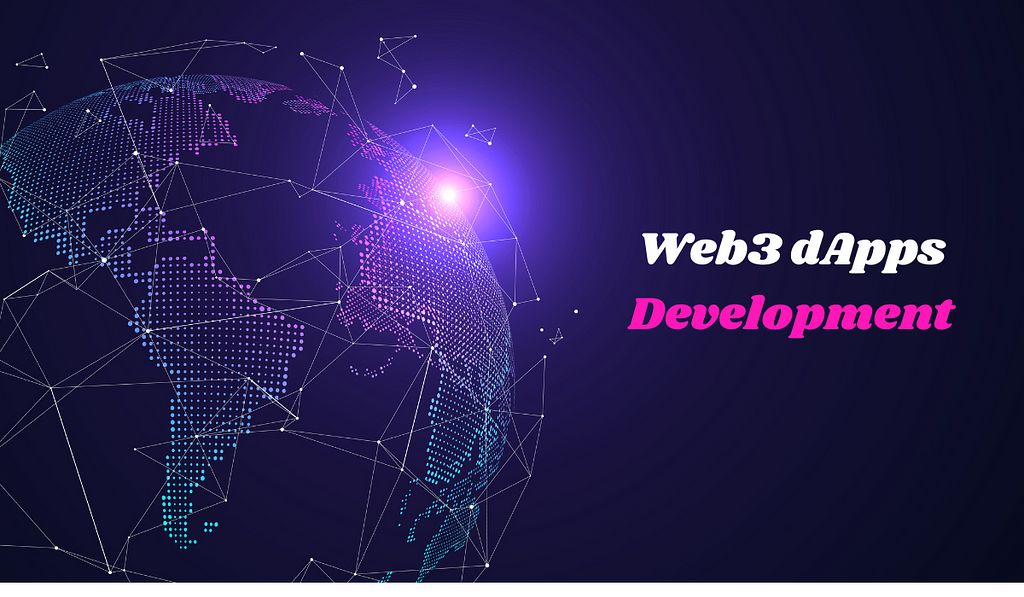Unleashing the Potential of dApp Development: A Deep Dive into Decentralized Applications
In the era of blockchain technology, decentralized applications (dApps) have emerged as a transformative force, revolutionizing various industries by offering transparent, secure, and censorship-resistant solutions. Unlike traditional applications that rely on centralized servers, dApps leverage blockchain technology to operate on a decentralized network of nodes, providing users with unprecedented control over their data and transactions. In this blog post, we’ll delve into the world of dApp development, exploring its underlying principles, key components, and potential applications.
 Understanding dApps: Decentralization in Action
Understanding dApps: Decentralization in ActionAt its core, a decentralized application is a software application that runs on a decentralized network of computers, utilizing blockchain technology to store and process data. Unlike centralized applications, which are controlled by a single entity, dApps operate autonomously, with no single point of failure or censorship.
1. Decentralized Architecture: The hallmark of a dApp is its decentralized architecture, which eliminates the need for intermediaries and central authorities. Transactions and data are recorded on a distributed ledger, ensuring transparency and immutability.
2. Smart Contracts: Smart contracts form the backbone of dApps, enabling automated and self-executing agreements between parties. These programmable contracts are deployed on the blockchain and automatically enforce the terms and conditions agreed upon by the involved parties.
3. Consensus Mechanisms: Consensus mechanisms such as Proof of Work (PoW) or Proof of Stake (PoS) ensure the integrity and security of the blockchain network. By reaching consensus on the validity of transactions, nodes in the network maintain the integrity of the distributed ledger.
Components of dApp DevelopmentDeveloping a dApp involves a combination of blockchain technology, cryptography, and traditional software development practices. Key components of dApp development include:
1. Blockchain Protocol: Selecting the appropriate blockchain protocol is crucial for dApp development. Popular choices include Ethereum, EOS, and TRON, each offering unique features and functionalities tailored to specific use cases.
2. Smart Contract Development: Smart contracts are the building blocks of dApps, governing the rules and logic of the application. Solidity, a programming language specifically designed for smart contract development, is commonly used for writing and deploying smart contracts on the Ethereum blockchain.
3. Frontend Development: The frontend of a dApp is typically built using web technologies such as HTML, CSS, and JavaScript. Web3.js and similar libraries allow developers to interact with the blockchain and smart contracts directly from the user’s web browser.
4. Backend Infrastructure: While dApps are decentralized at the protocol level, they may still require backend infrastructure for tasks such as data storage, user authentication, and off-chain processing. IPFS (InterPlanetary File System) and Swarm are decentralized storage solutions commonly used in dApp development.
5. User Interface (UI) Design: Designing an intuitive and user-friendly interface is essential for dApp adoption. User experience (UX) considerations such as responsive design, clear navigation, and seamless interactions play a crucial role in attracting and retaining users.
Potential Applications of dAppsThe versatility of dApps extends across various industries, offering innovative solutions to existing challenges. Some potential applications of dApps include:
1. Decentralized Finance (DeFi): DeFi platforms leverage dApps to provide financial services such as lending, borrowing, and trading without the need for traditional financial intermediaries. Examples include decentralized exchanges (DEXs), lending protocols, and stablecoin platforms.
2. Supply Chain Management: dApps can enhance transparency and traceability in supply chains by recording transactions and tracking the movement of goods on a distributed ledger. This enables stakeholders to verify the authenticity and provenance of products, reducing fraud and counterfeiting.
3. Identity Management: dApps offer decentralized identity solutions that enable users to control and manage their digital identities securely. By leveraging blockchain-based authentication mechanisms, dApps can eliminate the need for centralized identity providers and enhance privacy and security.
4. Gaming and Entertainment: The gaming industry is ripe for disruption with the advent of blockchain-based dApps. These decentralized gaming platforms enable players to own and trade in-game assets securely, fostering a new era of ownership and interoperability in gaming.
Challenges and ConsiderationsWhile dApps hold immense promise, they also face several challenges and considerations, including scalability, interoperability, and regulatory compliance. Scalability remains a key bottleneck for blockchain networks, with throughput and transaction fees often limiting the adoption of dApps. Interoperability between different blockchains and legacy systems is another hurdle that dApp developers must address to ensure seamless integration and data exchange. Additionally, navigating the evolving regulatory landscape presents challenges for dApp developers, as compliance requirements vary across jurisdictions and may impact the development and deployment of decentralized applications.
Conclusion: Embracing the Future of Decentralized ApplicationsIn conclusion, dApp development represents a paradigm shift in the way we conceptualize and interact with software applications. By harnessing the power of blockchain technology, dApps offer a new paradigm of decentralization, transparency, and trust in various industries. As developers continue to innovate and overcome technical and regulatory challenges, the potential of dApps to disrupt and transform existing business models is limitless. Embracing dApp development opens up a world of possibilities, paving the way for a more decentralized and inclusive future.
Unleashing the Potential of dApp Development: A Deep Dive into Decentralized Applications was originally published in Coinmonks on Medium, where people are continuing the conversation by highlighting and responding to this story.
